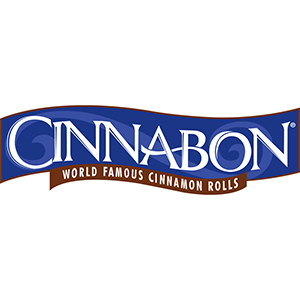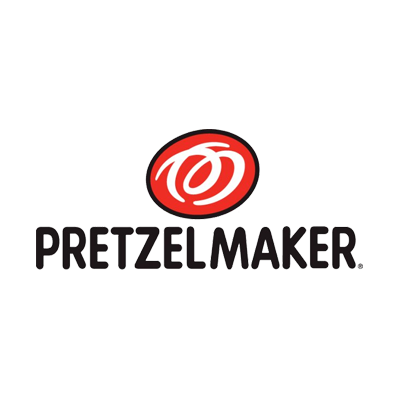Cinnabon Franchise in 2025: Costs, Fee & FDD
Discover the high costs and returns of investing in a Cinnabon franchise. Is the initial investment worth the potential ROI? Explore detailed insights on franchise fees, earnings, and more in our latest analysis!
Table of Contents:
Cinnabon was founded in 1985 by Rich Komen and his family in Seattle, Washington. It quickly rose to fame for its irresistible cinnamon rolls, which became a signature treat for the brand. The concept was to create a bakery that delivered high-quality, freshly baked goods with a unique flavor profile. The founders’ vision was simple yet profound: to craft a product that could bring joy with every bite. Cinnabon’s impact on the bakery industry is notable; it set new standards for indulgent, specialty baked goods and created a strong brand identity centered around its signature rolls.
Cinnabon’s core product is, of course, the classic roll, featuring a gooey, cinnamon-sugar filling topped with a luscious cream cheese frosting. They also offer variations like Cinnabon Delights, Stix, and a range of beverages. The brand caters to a broad audience, from sweet-toothed individuals to families looking for a comforting treat. Its core markets include high-traffic locations such as malls, airports, and busy shopping centers, where its tempting aroma draws in customers looking for a quick, indulgent snack or dessert.
Today, Cinnabon bakery boasts over 1,200 locations. The franchise has expanded to over 56 countries worldwide. The brand’s global presence highlights its success and adaptability in various markets. On average, Cinnabon bakery locations serve thousands of customers daily, thanks to their strategic placement in high-traffic areas. This widespread footprint is a testament to the brand’s popularity and effective business model, making it a strong contender in the specialty bakery industry. Cinnabon offers various bakery formats including full bakery and co branded bakeries, supporting multi-channel growth.
Cinnabon provides extensive support to its franchisees through a comprehensive training program that encompasses operations and marketing. Franchisees receive 36 hours of on-the-job training and 20 hours of classroom training, with the continuous support to ensure their success. This includes assistance with site selection, store design, and a robust supply chain network. Franchisees also benefit from Cinnabon’s established brand reputation and marketing resources, which help attract customers and build loyalty. By focusing on franchisee success, the franchise assist its partners with the tools and support needed to thrive in the competitive bakery market.
Cinnabon Franchise Insights
- Their iconic cinnamon rolls are so beloved that the brand has expanded to over 1,200 locations in more than 50 countries, showing a remarkable global appeal and adaptability.
- The irresistible scent of Cinnabon’s baking process is a key part of its marketing strategy, designed to attract customers even from a distance in high-traffic areas like malls and airports.
- The units can offer a range of products like Cinnabon Delights and seasonal items, providing flexibility and opportunities for menu innovation.
- The brand’s well-established international supply chain ensures consistent quality across all locations, making it easier for franchisees to maintain high standards and deliver the signature Cinnabon experience.
- The Cinnabon motto, ‘Whatever you crave, Life Needs Frosting®’, encapsulates the brand’s commitment to delivering indulgent experiences through its signature rolls and other baked goods. This motto not only reflects the sweet rewards that come with every bite but also highlights the brand’s philosophy of adding a touch of joy and delight to everyday moments.
Cinnabon Franchise Key Indicators
Growth YOY (%)
3%
vs industry 0%
Total Investment
$255K-$674k
3-year Failure Rate
15%
vs industry 11%
How much does it cost to open a Cinnabon franchise?
Understanding the investment and capital requirements is crucial when considering opening a Cinnabon franchise. Knowing these costs can help you evaluate whether the investment aligns with your financial situation and business goals. The total investment not only affects your initial commitment but also impacts your long-term financial planning and potential returns.
Min & Max Investment
Opening this franchise involves several key costs, which are outlined in Item 7 of the Franchise Disclosure Document (FDD). You can see a breakdown of the costs below from the most recent Item 7 below:
| Type of Expenditure | Minimum Investment | Maximum Investment |
|---|---|---|
| Initial Franchise Fee | $30,500 | $30,500 |
| Construction and Build Out Costs | $99,800 | $297,000 |
| Permitting | $2,400 | $7,900 |
| Equipment Package | $45,000 | $108,000 |
| Millwork | $20,000 | $40,000 |
| Menu Board, Graphics and Interior Signage | $2,000 | $12,000 |
| Exterior Signage | $2,300 | $15,000 |
| Computer System | $7,400 | $27,400 |
| Smallwares | $3,500 | $7,000 |
| Architect/Engineer | $4,200 | $18,800 |
| Rent | $4,000 | $10,000 |
| Grand Opening Marketing | $2,500 | $7,500 |
| Legal and Accounting Fees | $5,000 | $10,000 |
| Insurance | $1,250 | $6,800 |
| Misc. Opening Costs/Office Supplies | $1,800 | $6,800 |
| Security Deposits | $0 | $15,000 |
| Management Training Program Fee | $0 | $2,500 |
| Travel and Living Expenses during Training | $3,100 | $5,100 |
| On-Site Training Fee | $0 | $6,100 |
| Opening Inventory | $5,000 | $8,000 |
| Additional Funds – 3 Months | $15,000 | $33,000 |
| Total | $254,750 | $674,400 |
Item 7 in the Franchise Disclosure Document (FDD) is the “Estimated Initial Investment” section. It outlines the total costs a franchisee can expect to incur when starting a franchise, including the initial franchise fee, equipment, inventory, real estate, and other startup expenses. This section is crucial because it provides potential franchisees with a detailed understanding of the financial commitment required, helping them assess affordability and plan their investment strategy effectively.
Required Capital
To open a Cinnabon franchise, you typically need to have a minimum net worth of around $500,000. Additionally, franchisees are required to have a minimum liquid capital of $120,000 to cover initial expenses and operational costs. These figures can vary depending on the specific location and size of the franchise. The franchise requires these financial qualifications to ensure that potential owners are adequately prepared to handle the investment and ongoing expenses of running a successful store. While these numbers are estimates, they provide a general guideline for the financial stability needed to enter the franchise.
How much does a Cinnabon franchise owner make?
The income of franchise owner depends on various factors, including location, sales volume, and operational efficiency. Key elements such as revenue from sales, management of costs, and adherence to franchisor guidelines all play a role in determining profitability. Effective management can enhance profit margins, which in turn affects the owner’s earnings. Understanding these financial dynamics is crucial for estimating potential income and ensuring the franchise’s financial health.
Cinnabon Revenue & Gross Sales
In recent years, franchises have reported median gross sales of approximately $663,157 annually per enclosed mall location, which is the most common type of locaton. This figure reflects a consistent demand for its popular rolls and indicates a solid revenue potential for franchisees. These sales figures highlight the brand’s strong market presence and potential for generating substantial returns, provided that the franchise operates efficiently and effectively manages its costs.
Which key factors impact the average revenue performance of Cinnabon franchisees?
The stabilization of U.S. Cinnabon franchisee median gross sales can be linked to several key factors. Persistent consumer demand for its popular cinnamon rolls has provided a steady stream of revenue. High-traffic locations and effective marketing strategies have also played a crucial role in maintaining sales figures. While operational costs like ingredients and labor have remained stable, they haven’t significantly impacted profitability. Overall, these elements have contributed to a balanced revenue performance, allowing units to sustain their financial performance despite broader economic shifts.
Cinnabon Franchise operational costs
When opening a franchise, it’s crucial to factor in several key ongoing operational costs. These expenses are essential to maintaining smooth operations and ensuring the business remains profitable. Here’s a breakdown of the primary costs to consider:
- Food and Beverage Regular purchases of high-quality ingredients for your signature cinnamon rolls and other menu items.
- Labor Wages for staff, including bakers, counter staff, and managers.
- Rent Lease payments for your retail space, which can vary based on location.
- Utilities Costs for electricity, water, and gas necessary for daily operations.
- Maintenance Upkeep and repairs of equipment and store facilities to ensure everything runs smoothly.
- Supplies Items like packaging, cleaning materials, and other consumables.
- Insurance Coverage for property, liability, and employee-related risks.
- Technology Costs related to point-of-sale systems, software, and other tech tools essential for operations.
Cinnabon Franchise Fees
Owning this franchise involves several ongoing fees that are important to factor into your financial planning. These fees support the brand’s operations and marketing efforts, ensuring you get the most out of your investment. Here’s a rundown of the key franchise fees you’ll encounter:
- The royalty fee for a Cinnabon bakery franchise is 6% of gross sales, which covers the use of the brand name and operational support.
- Franchisees contribute to national and sometimes local marketing efforts. The national advertising fee is generally about 2-3% of gross sales, helping to promote the brand and drive customer traffic.
- There may also be costs for technology updates, ongoing training programs, and other support services provided by the franchisor.
These franchise fees are crucial for maintaining brand consistency and benefiting from the established marketing and operational support that comes with being a franchisee.
Cinnabon Franchise Earnings
The earnings of a franchise owner can vary based on factors like location, sales volume, and operational efficiency. A franchise generates median gross sales of approximately $663,157 annually for enclosed mall locations, according to the 2024 FDD. For an owner-operator, this could translate to estimated earnings of about $100,000 per year before interest, taxes, depreciation, and amortization (EBITDA). This means if the owner is working in the business they can expect $100,000 as their salary.
However it is important to note that if the owner is not working in the business and instead opts to hire a manager, then their earnings will be less.
How to Become a Cinnabon Franchisee
Becoming a Cinnabon franchisee involves a series of steps to ensure you’re well-prepared to start and run a successful business. Here’s a simplified overview of the process from initial inquiry to opening your location:
- Initial Inquiry You or your franchise specialist submits an initial inquiry basic information about your interest and background. Additionally, you should conduct thorough research on the franchise, including seeing all of the information available on the Vetted Biz franchise intelligence platform, including access to the most recent Franchise Disclosure Document (FDD).
- Financial Review Next, you’ll need to provide detailed financial information to demonstrate that you meet the financial requirements. This includes disclosing your net worth and liquid assets to ensure you have the capital necessary to invest in and sustain the franchise.
- Interview and Approval After passing the financial review, you’ll go through a series of interviews with the franchise team. These discussions help assess your suitability as a franchisee and ensure you understand the franchise’s operational model and expectations.
- Training Once approved, you’ll undergo a comprehensive training program. This training covers all aspects of operating a franchise, including store management, customer service, and product preparation.
- Location Development With training complete, you’ll work on securing and developing your franchise location. This involves site selection, store design, and construction to meet their standards and guidelines.
- Opening Support Cinnabon provides support during the opening phase to ensure a smooth launch. This includes assistance with marketing, staff training, and operational setup to help you get your store up and running effectively.
Pros & Cons
Pros:
Strong Brand Recognition: Cinnabon is a well-known brand with a strong reputation for its delicious cinnamon rolls and baked goods, which can attract customers and drive sales.
Established Business Model: With a proven track record and a comprehensive support system, the brand offers a tested franchise model, reducing the risks associated with starting a new business.
High-Traffic Locations: Franchises are typically located in high-traffic areas such as malls and airports, which helps ensure a steady flow of customers.
Product Flexibility: The ability to offer various products beyond the classic cinnamon roll, such as Delights and beverages, allows franchisees to adapt to market demands and preferences.
Cons:
High Initial Investment: The initial cost to open a franchise can be significant, ranging from $255K to $674K, which might be a barrier for some potential franchisees.
Operational Challenges: Running a franchise involves managing high volumes of inventory and maintaining quality standards, which can be demanding.
Market Saturation Risk: The popularity of the brand means that the market could become saturated, potentially leading to increased competition and lower sales.
Dependence on Location: The success of a franchise heavily depends on choosing a prime location with high foot traffic. Poor site selection can negatively impact sales.



